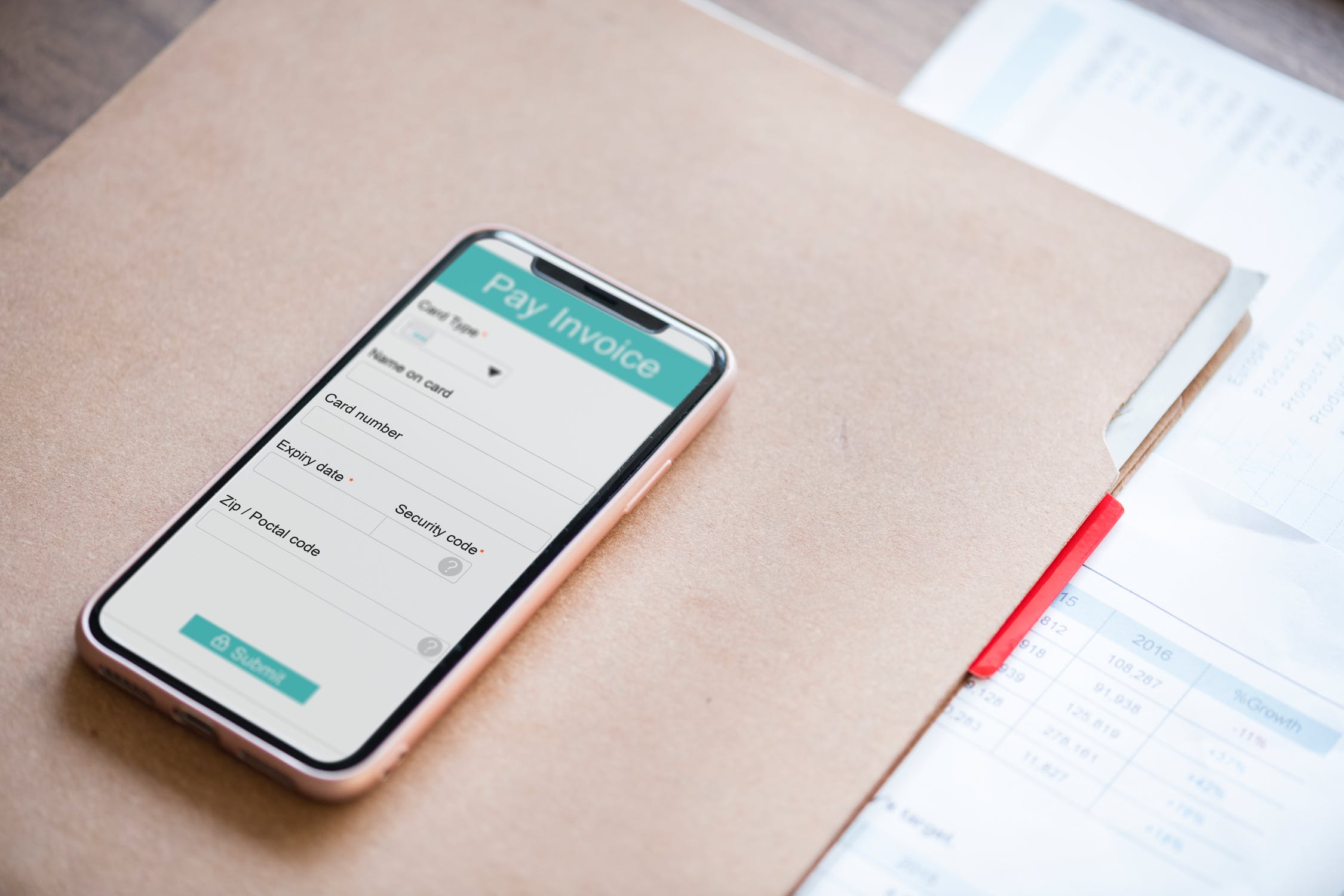How to Get Clients to Pay on Time (Without Getting Rude)
Last updated on
There’s nothing more frustrating for an entrepreneur than clients who don’t pay right away. You delivered the work on time. You should be paid promptly, too.
According to a Sage report, 25% of payments made to businesses come in late. 40% of small and medium businesses experience direct negative impacts from late payments.
If a client drags their feet to pay your invoice, you may find it tempting to get tough. Your feelings are valid, but behaving rudely with a client doesn’t help. They’ll resent your attitude and take their sweet time. If you’re really crass, they might not bother paying at all.
It’s important not to take late payments personally. Your clients probably aren’t intentionally trying to hurt you. They may be busy with their clients. They may be struggling with cash flow.
But no matter the reason for the delay, you still have to take steps to get clients to pay on time. Instead of becoming a tough enforcer, build a system that encourages your clients to pay promptly. These strategies will help you improve your cash flow so you can grow your business.
1. Build Strong Relationships
The best way to get clients to pay on time is to create a close, healthy relationship that neither party wants to break. You want the client to feel like a partner who works with you, rather than a transaction who simply buys things.
Psychologist Robert Cialdini ran an interesting study that tracked how people responded to a waitress who offered candy when she delivered the bill. When she offered one piece, her tips rose 3.3%. When she offered two pieces, her tips rose 14.1%. When she offered one, left, and returned to offer another, her tips rose by 21.3%!
This shows that people will reward you if they think you went out of your way for them. If you invest in your clients, they’ll reciprocate.
Identify the key person (or people) at your client’s company who control how quickly you get paid and make them happy. Show them how much you value their business by finding ways to delight them.
2. Set Clear Contract Terms
It’s hard to make payment demands based on rules your clients aren’t aware of, so it’s important to put your payment terms in your contract or another obvious location.
If you don’t use contracts (you should!), outline your terms in an email. Insist they confirm that they’ve read the email by replying to it. Don’t start work until you have this confirmation.
3. Get Paid First
In a perfect world, you would be paid for everything before you do it. Many clients resist that, however, because they don’t want to lose their leverage if they aren’t satisfied with your product or service.
If you can’t get your clients to pay for 100% of the invoice upfront, ask for a down payment. Tell them you need a deposit to “reserve your time” or “purchase materials” or whatever makes sense in the context of your business.
You can also break your projects into milestones or checkpoints. For instance, you might invoice a third of a project’s cost at the beginning, a third at the halfway point, and a third at the end.
Make sure to inform your client at the beginning of your relationship if you require a deposit or some kind of unique billing structure.
4. Be Flexible with Payment Methods
A great way to get clients to pay on time is to let them pay however they like. This may be more complicated for you, but it’s worth it for steady cash flow.
Getting paid through your website is usually easiest for everyone. With Stripe and WP Simple Pay you can place online forms on your site for clients to pay through. Stripe also lets you send invoices with one-click payment buttons. You also get fraud detection.
Speaking of invoicing…
5. Use a Cloud-Based Invoicing Tool
Don’t waste your time creating and emailing PDF invoices. Use a cloud-based software tool to send and receive invoices, as well as handle all your accounting needs.
When you search for an invoicing tool, you want three specific features that will help you get clients to pay on time:
- The ability to create a template with your logo, contact information, and special notes. This way you only have to input the line items for each invoice you send.
- The ability to set an automatic schedule of reminders if the client doesn’t pay the invoice. It should also automatically calculate late fees you designate.
- The ability for clients to click a link in the invoice to pay. This way they won’t have to go to another platform to send you a payment.
Here are a few invoicing tools you should look into. This list isn’t exhaustive, so you’ll want to do your own research as well.
- Sprout Invoices (WordPress plugin)
- Wave
- Stripe
- Zoho Invoice
- AND CO
- Xero
- FreshBooks
- QuickBooks Online
6. Invoice Quickly and Regularly
If you want your clients to pay their bills on time, you have to actually give them the bill. The sooner you send the invoice, the sooner they can pay it.
Some companies have long approval processes that have to go through multiple departments before someone can send you a check or input their credit card details. If you delay sending the invoice, you’re just delaying that process.
Ask about your clients’ invoicing systems when you start working with them. How long do they take to pay? Do they require any special information on the invoice or receipt? Should you send the invoice to any other parties? Getting these details will help you fulfill your end of the process quickly and error-free.
Furthermore, you’ll want to invoice at least monthly. If a client doesn’t pay their bill in a month, send another invoice. Point out that a payment is 30 days late.
7. Charge Late Fees
A great way to get clients to pay on time is to charge them if they don’t. This is very effective, but only if the client is keenly aware of your fee structure.
Review your fees with the client before you start working. Don’t assume the client will read your contract completely. Outline the fees in an email or discuss them over the phone.
Furthermore, don’t be afraid to enforce your fees. If you neglect to charge a late fee on one invoice, the client will resist when you do decide to apply them. Keep things simple by charging your fees every time your client fails to meet his payment deadline.
For best results, make your fees a percentage of the bill. Declare a hard “payment due date” and a fee that compound over time. Use language like this:
“Invoices are Net 30, meaning payment is due within 30 days of the day you receive the invoice. We charge a 2% late fee every 30 days until the bill is paid.”
8. Incentivize Early Payments
While late fees are great negative reinforcement, you’ll want to try some positive reinforcement as well.
Offer clients a small discount on their next invoice for paying early. If they pay, for example, within 48 hours, you might give them 5% off the next bill.
This has two advantages. For one, they pay quickly to secure the savings. For another, the client becomes likely to stick with you longer because they have a credit that isn’t available from one of your competitors.
9. Offer Payment Plans
Some clients don’t pay on time because they don’t have the cash together. They may want to pay you, but they have other more pressing concerns (like their overhead expenses and payroll) to meet before they can get to you.
If you suspect this is the case for your client, offer to let them pay in installments. Find a schedule that works for the both of you. You can set up a recurring payment system or simply invoice them at pre-decided intervals.
10. Stop Working
If you’ve tried all of the tactics above and still can’t get paid, it’s time to stop working. Don’t produce anything more and don’t send over what you’ve done.
Let the client know you can’t work any more until you receive a payment. You may accept a partial payment in order to keep working, but that’s up to you. If they really need your work, they’ll find a way to pay because now it benefits them.
Yes, this tactic might sour your relationship with the client, but if they aren’t paying you for your products or services, they aren’t really clients.
Develop Your System
It’s frustrating when a client won’t pay on time. But other than a strongly worded email, there’s little you can do to force out a payment. Your best course of action is to use the strategies we’ve listed above to develop a system that encourages your clients to pay promptly.
Disclosure: Our content is reader-supported. This means if you click on some of our links, then we may earn a commission. We only recommend products that we believe will add value to our readers.





